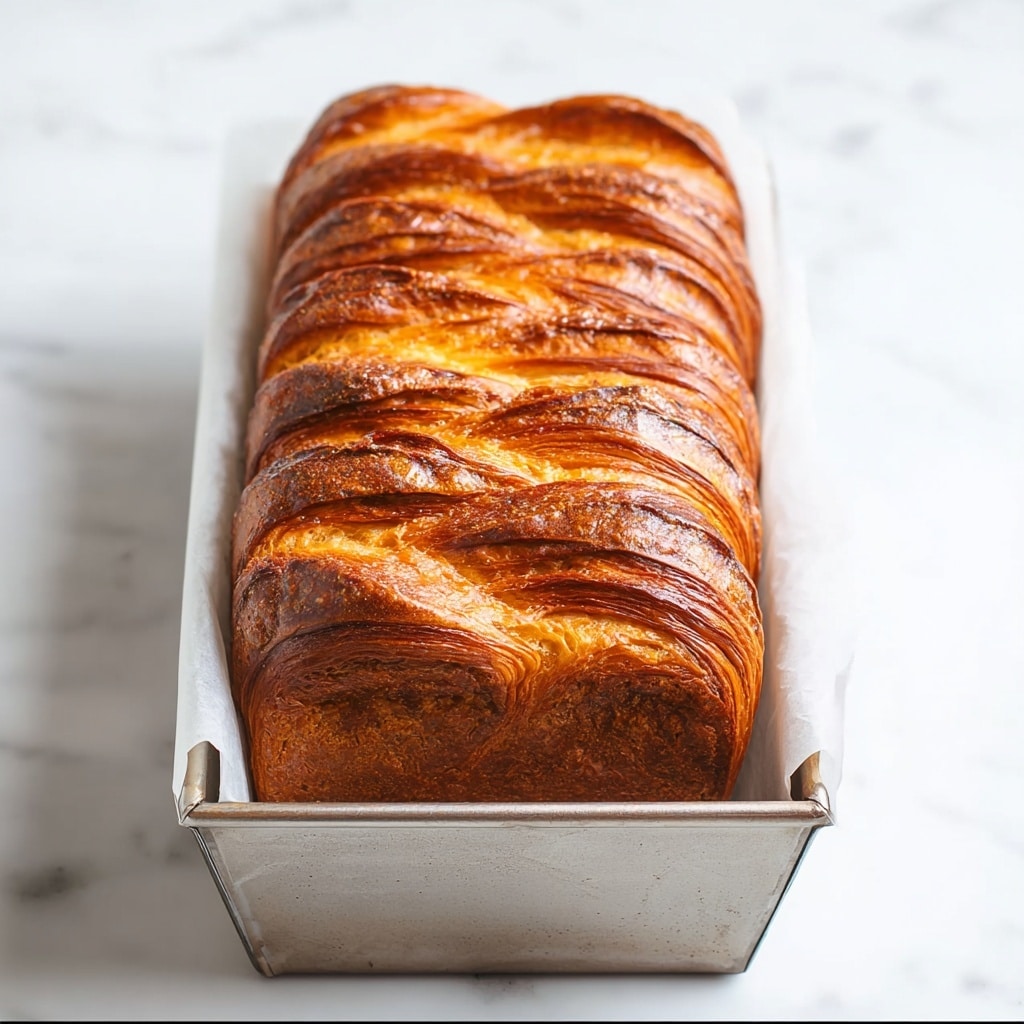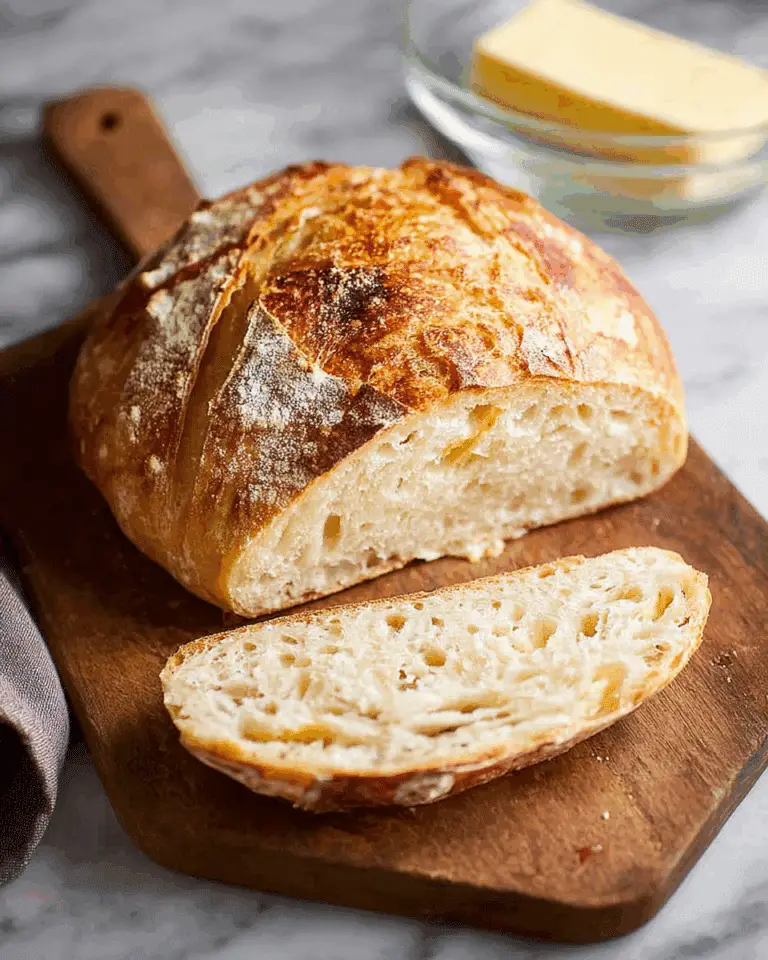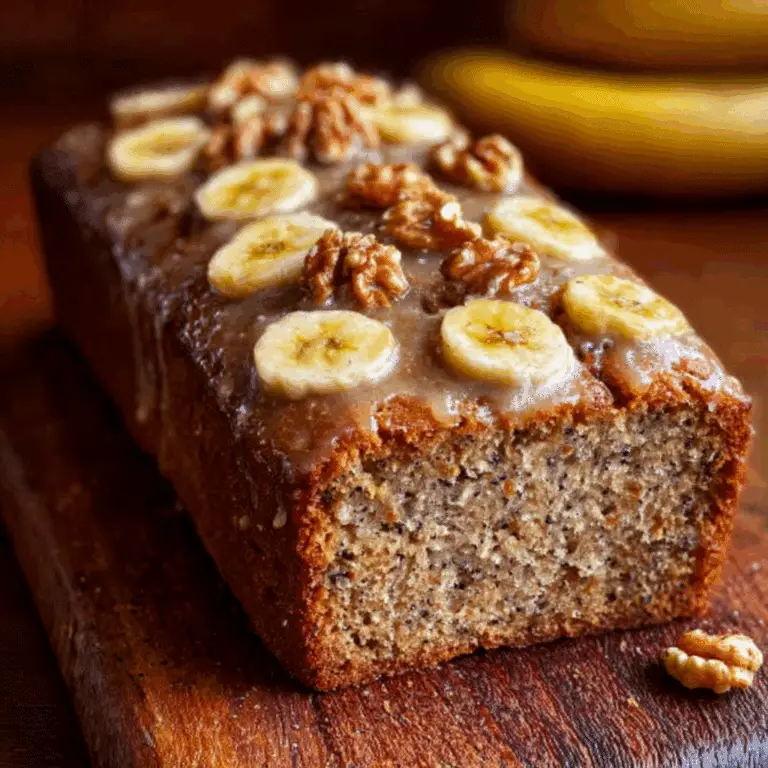If you’re a fan of both traditional French pastries and classic homemade bread, croissant bread loaf is about to become your new obsession. This irresistible treat is what happens when buttery, flaky croissants meet the comforting tenderness of a bread loaf—all baked together into a golden, pull-apart masterpiece. Perfect for a leisurely breakfast or a snack that feels extra-special, croissant bread loaf weaves melt-in-your-mouth layers with pure, nostalgic flavor. Once you taste it fresh from your own oven, you’ll wonder how you ever settled for anything less.

Ingredients You’ll Need
You’ll be amazed by how just a handful of kitchen staples come together to create croissant bread loaf magic. Each ingredient is carefully chosen to lend flavor, texture, and that signature golden hue your loaf deserves. Here’s what you’ll need for bakery-quality results at home:
- Whole milk: Warmed to the right temperature, this sets a tender dough in motion and adds a subtle richness.
- Instant or active dry yeast: The heartbeat of your rise, this ingredient ensures a light, airy crumb.
- Granulated sugar: Adds gentle sweetness and helps the yeast activate for a reliably fluffy loaf.
- Salt: Balances the flavor and brings out the bread’s subtly savory notes.
- Softened butter (for dough): Blends seamlessly for a dough that’s flavorful and moist.
- All-purpose flour: Provides just the right structure to hold layers without losing tenderness.
- Salted butter (for lamination): The hero of those iconic croissant layers—make sure it’s soft but cool.
- Large egg: For an egg wash that delivers a bakery-worthy, shiny finish your croissant bread loaf deserves.
- Water: A splash for the egg wash, helping the top bake to a gorgeous golden brown.
How to Make croissant bread loaf
Step 1: Prepare the Dough
Start by waking up your yeast! In a medium bowl, whisk together the warm whole milk, instant or active dry yeast, and a sprinkle of granulated sugar. Let this sit for about five minutes, just until it looks bubbly and frothy—your ticket to a lofty, soft croissant bread loaf. Next, stir in the salt, softened butter, and most of the flour, mixing until everything comes together. Add the rest of the flour gradually, and once a very soft dough forms, knead it for about five minutes on a lightly floured surface. This step is all about developing structure and getting things nice and stretchy!
Step 2: Let the Dough Rise
Pop your dough into a greased bowl, cover it snugly with a towel or plastic wrap, and let it rise in a warm spot for 1.5 to 2 hours—until it’s doubled in size. Watching it puff up is always so satisfying, and this first rise lays the foundation for those beautiful, tender layers.
Step 3: Prepare for Lamination
Gently flatten the risen dough and shape it into a rectangle, about 10 by 14 inches. Slide this into the fridge for 20 minutes to chill—it makes your next step much easier. Meanwhile, slice the slightly softened salted butter into quarter-inch slabs. When the dough is cool, lay the butter slices evenly over the top. This is what will give you those much-loved croissant bread loaf layers in every bite.
Step 4: First Lamination
Fold the dough up over the butter envelope-style, covering the butter entirely. Rotate your dough 90 degrees, then roll it out gently into a 9 by 12 inch rectangle. Do a letter fold—fold the top and bottom thirds into the center, just like folding a letter. Tuck the dough back into the fridge for another 20 minutes. For an authentic layered effect, repeat this lamination process two more times, always chilling between folds. Your patience here pays off big!
Step 5: Shape the Loaf
Give your laminated dough one final roll to about 9 by 12 inches. Starting from the long side, roll it up tightly—think of rolling a jelly roll. Slice this log into five even rolls. You’ll see all those beautiful layers already making an appearance!
Step 6: Second Rise
Arrange the five rolls, seam side down, in a greased 9 by 5 inch loaf pan. Cover again and let them rise for another 45 to 60 minutes. You want them plump and cozy, touching each other and ready to spring into flaky perfection in the oven.
Step 7: Baking
While your croissant bread loaf is rising, preheat your oven to 350 degrees Fahrenheit. Whisk together the egg and water for an egg wash and brush it liberally over the tops of the rolls. Bake for a full hour, tenting with foil after 25 minutes so it bakes through without over-browning. Your kitchen will smell absolutely heavenly!
Step 8: Cooling
Resist the urge to dig in right away! Let the loaf cool in its pan for about 30 minutes so the structure sets, then remove it and let it finish cooling on a wire rack for another 15. This wait ensures those gorgeous flaky layers stay intact when you slice.
How to Serve croissant bread loaf

Garnishes
A croissant bread loaf looks irresistible on its own, but a simple brush of melted butter right before serving adds shine and an extra hit of flavor. For a sweet touch, try a sprinkle of powdered sugar or a drizzle of honey. If you’re feeling adventurous, a little orange zest or a light glaze can give every slice a sophisticated twist.
Side Dishes
Pair your croissant bread loaf with classic breakfast companions like creamy scrambled eggs, salty smoked salmon, or a colorful fresh fruit salad for a wonderfully balanced brunch. For an afternoon treat, serve with your favorite jam, a hot coffee, or a velvety latte, and you’ll be in snacking heaven.
Creative Ways to Present
This loaf is showstopping enough for any table! Try slicing it thick and layering with sweetened mascarpone and berries for a brunch trifle, or serve as the star of a cheese and charcuterie platter. Looking for an over-the-top dessert? Toast slices lightly and stack with ice cream and chocolate sauce for a next-level bread sundae.
Make Ahead and Storage
Storing Leftovers
If by some miracle you have leftovers, wrap your croissant bread loaf tightly in plastic wrap or store in an airtight container at room temperature. It will stay fresh and soft for up to two days—just keep it away from heat or direct sun to protect those precious layers!
Freezing
To make your batch last even longer, slice the cooled loaf, then wrap each piece individually in plastic wrap and layer them in a freezer-safe bag. The croissant bread loaf freezes beautifully for up to two months—perfect when you want a special treat on-hand for busy mornings.
Reheating
Bring your slices back to life by popping them in a 300 degree oven for about 7 to 10 minutes, or quickly warm them in the toaster. You’ll revive the delicate, crispy edges and reawaken those luscious, buttery aromas that make this croissant bread loaf impossible to resist.
FAQs
Can I make croissant bread loaf dough the night before?
Absolutely! You can complete the first rise, then cover the dough tightly and chill it overnight. This not only saves time, but deepens the flavor. Pick up with the lamination steps in the morning for fresh-baked bliss.
What’s the secret to getting super-flaky layers?
The key is to keep your butter cool but pliable, and to chill the dough between every fold. Don’t rush those fridge breaks—each one helps create the signature croissant bread loaf texture you’re after.
Can I use unsalted butter for lamination if I’m watching sodium?
Yes, unsalted butter works beautifully for lamination and allows you to better control the salt content of your finished loaf. Add an extra tiny pinch of salt to the dough if you want a richer flavor.
What’s the difference between all-purpose and bread flour in this recipe?
All-purpose flour gives a perfect balance of structure and tenderness, which is lovely for croissant bread loaf. If you only have bread flour, your crumb might be a bit chewier, but the flavor will still be fantastic.
How should I slice croissant bread loaf for best results?
For clean slices that preserve all those gorgeous layers, use a serrated bread knife and let the loaf cool completely before cutting. This way, every piece stays perfectly flaky and picture-worthy!
Final Thoughts
This croissant bread loaf is pure joy in every bite—flaky, buttery, and warm from the oven, it’s a treat you’ll look forward to sharing at any table. Whether you’re a baking newbie or a pastry enthusiast, don’t be surprised if this recipe becomes your new secret weapon for wow-worthy breakfasts and brunches. Go ahead and give it a go—your taste buds (and anyone lucky enough to snag a slice) will be absolutely delighted!
Printcroissant bread loaf Recipe
A unique blend of flaky croissant and comforting bread loaf, perfect for breakfast or a snack.
- Prep Time: 30 minutes
- Cook Time: 60 minutes
- Total Time: 120 minutes
- Yield: 5 servings
- Category: Bread
- Method: Baking
- Cuisine: French
- Diet: Vegetarian
Ingredients
Dough:
- 1 cup whole milk, warmed to about 110°F
- 2 and 1/4 teaspoons instant or active dry yeast
- 3 tablespoons granulated sugar
- 1 and 1/4 teaspoons salt
- 3 tablespoons unsalted or salted butter, softened
- 3 cups all-purpose flour, plus more as needed
Butter Layer:
- 3/4 cup salted butter, slightly softened
Egg Wash:
- 1 large egg
- 1 tablespoon water
Instructions
- Prepare the dough: In a medium bowl, whisk together the warm milk, yeast, and sugar. Let sit for about 5 minutes until frothy. Add salt, softened butter, and 2 cups of flour. Mix on medium speed for 2 minutes. Gradually add remaining flour, mixing on low speed until soft dough forms. Knead for about 5 minutes on a floured surface.
- Let the dough rise: Place the dough in a greased bowl, cover, and let it rise in a warm spot for 1.5 to 2 hours until doubled in size.
- Prepare for lamination: Flatten the risen dough, shape into a rectangle (10×14 inches), and refrigerate for 20 minutes. Cut softened butter into 1/4 inch slices and place it on the chilled dough rectangle.
- First lamination: Fold the dough over the butter, then rotate 90 degrees, roll out to a 9×12 inch rectangle, and perform a letter fold. Refrigerate for another 20 minutes. Repeat this for a total of three laminations.
- Shape the loaf: Roll out the dough to 9×12 inches, then roll tightly like a jelly roll and cut into five even rolls.
- Second rise: Place the rolls seam side down in a greased 9×5 inch loaf pan, cover, and let them rise for 45 to 60 minutes.
- Baking: Preheat oven to 350°F. Brush the tops of the rolls with an egg wash and bake for 1 hour, tenting with foil after 25 minutes.
- Cooling: Allow the loaf to cool in the pan for 30 minutes before removing it to cool on a wire rack for an additional 15 minutes.
Notes
- For best results, ensure the dough doubles in size during the first rise and use cold butter for lamination.
Nutrition
- Serving Size: 1 roll
- Calories: 300
- Sugar: 6g
- Sodium: 450mg
- Fat: 15g
- Saturated Fat: 10g
- Unsaturated Fat: 3g
- Trans Fat: 0g
- Carbohydrates: 35g
- Fiber: 1g
- Protein: 6g
- Cholesterol: 40mg








